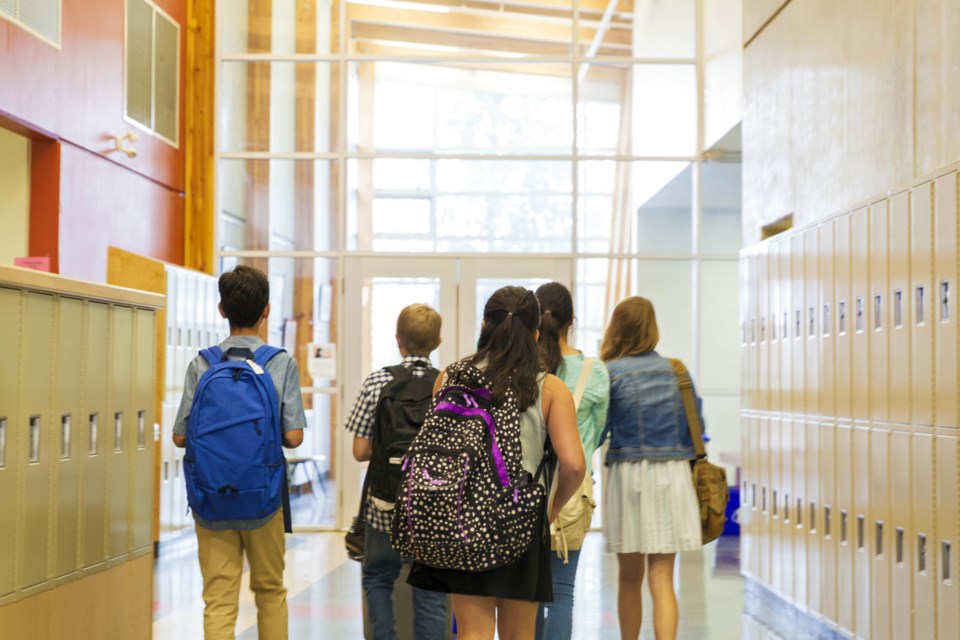School districts across the province have issued their plans for bringing students back into their classrooms this September in the midst of the novel coronavirus pandemic.
Here is a look at the basics as gleaned from the document posted on the School District 57 website, along with comments from school district officials and from a briefing Ministry of Education officials presented to provincial media:
In class is best: The main goal is to "maximize in-class learning within the public health guidelines," officials said at the briefing.
School District 57 board chair Tim Bennett echoed the comment while addressing local media on Wednesday: "We know that nothing can take the place of face-to-face instruction - that the best learning happens when we have teachers in front of kids."
Learning groups: To that end, students and teachers will be divided into cohorts or "learning groups" of 60 people at the elementary level and 60-70 at the secondary. Under a staggered schedule, they will have lunch and recess together but separate from other cohorts within the school.
High school students in Prince George and Mackenzie will see their school years divided into quarters in which they will take two courses at a time, down from the traditional load of four course spread over a half-year.
By doing that, their cohorts will number 60-70 people, well below the 120 allowed by the Provincial Health Office although that will still mean classes of as many as 30 students without physical distancing.
There will be physical distancing between cohorts and, when that can't occur, masks will be mandatory. Each student will be given two reusable masks and a supply of disposable ones will be on hand.
They can also expect one-way flows in high-traffic areas like stairwells, while visitors and non-site staff will be permitted in the building by appointment only.
On the bus: For secondary students, masks will be mandatory.
Moreover, passengers will be loaded from the back seats to the front and emptied from the front to the back to prevent students passing each other in the aisle. And all routes will have a designated seating plan with daily rider attendance.
No lockers: "Students will not have access to lockers at this time," the school district states in its plan. Instead, students will bring "limited materials to school" - like books, paper and pens in a backpack, and they should not share any personal items including electronic devices.
Keeping clean: The school district received funding for an additional 12,000 hours of janitorial service and all schools will have a custodian on site during the day and into the evening.
General cleaning and disinfecting will occur at least once a day and, for high-touch areas like door knobs and light switches, at least twice a day.
And hand washing stations will be in place at spots like school entrances, hallways and classrooms.
If sick: Students who are feeling COVID-19-related symptoms but due to an existing condition, like seasonal allergies, can still go to class. Otherwise, they should stay home and follow the protocols for assessing whether they have contracted the virus.
If a student or teacher becomes ill, a school will issue a notification only if directed by a public health officer.
Stages, stages, stages: While the Provincial Health Office has divided the pandemic into four phases with the first being the worst, the Ministry of Education has divided it into five with the first being the best.
Bennett acknowledged the confusion. "Of course, government made it convenient for everyone," he said, tongue firmly in cheek.
Either way, we're currently in stage two as far as the Ministry of Education is concerned. Should things worsen, the school district's plan also holds guidelines for a stage three hybrid plan which would see class time reduced in favour of self-directed and remote learning.
Learning group sizes would be cut to 30 for elementary and to 60 for secondary and a "density target" of 50 per cent of a school's enrolment.
Immune-compromised students: Parents of children with health troubles are asked to consult with their physicians to determine their child's risk for returning to in-class instruction.
Those who want an alternative to in-class instruction but do not wish to register their child in home schooling or a distributed learning program will need a note from their physician. From there, the school should work with the family to develop options.



